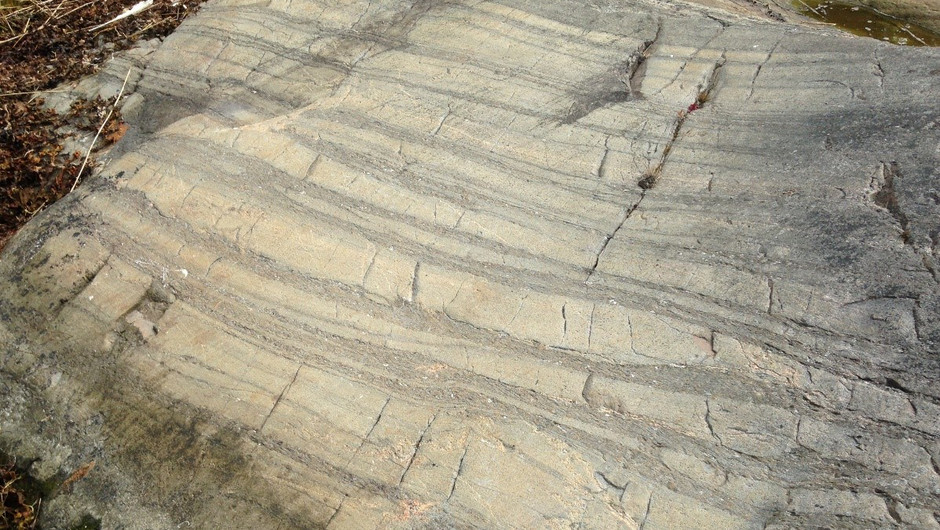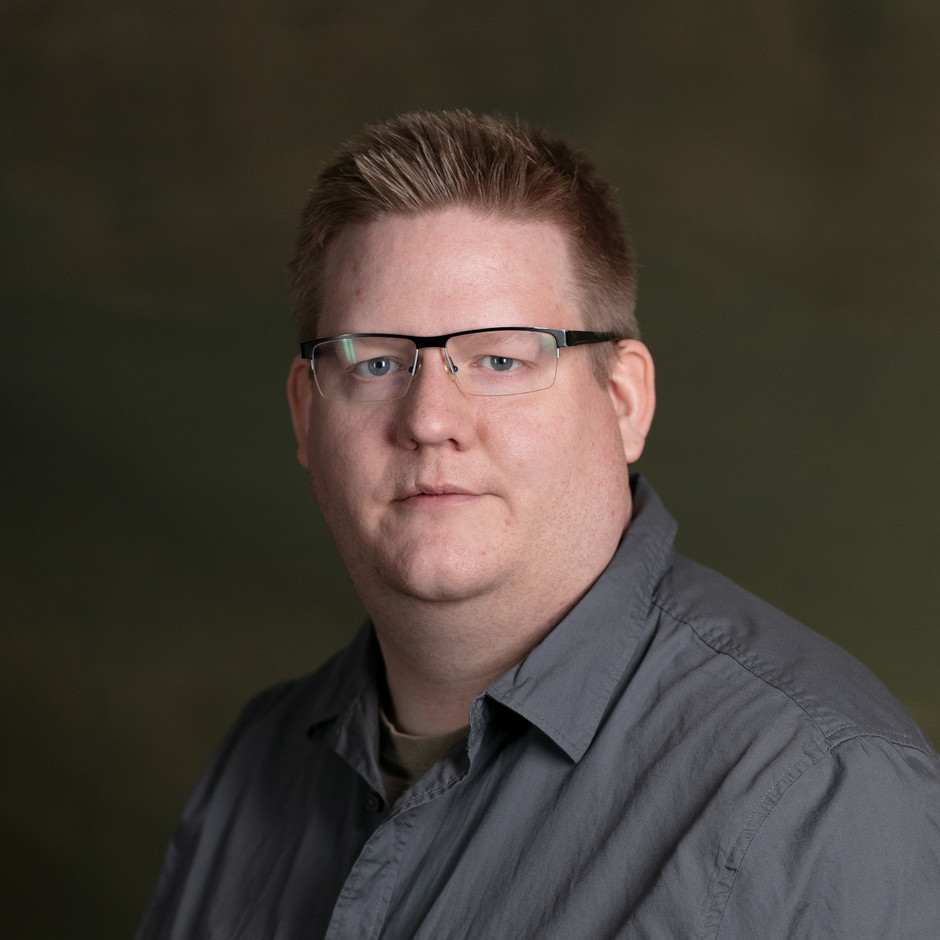Forskningsområden: Geovetenskap
Forskningsämnen: Geologiska och förhistoriska händelser
Project overview
Project period: 2001 – Ongoing
Participating departments from the museum: Department of Geosciences, GEO
Since around the year 2000 my research has been focused on the Precambrian bedrock of southern and central Sweden, with a subdivision on several subprojects, and an overarching goal of clarifying the age relations among the different rock units and understand their origin, using the isotope geochemical methods that are available at the Department of Geosciences at the Swedish Museum of Natural History. Some of these studies have also dealt with the concealed Precambrian crust in Poland and Lithuania, in cooperation with geologists from those countries. A wider goal is to find what place our part of the world, Fennoscandia and Baltica (northeast Europe), has had in the global plate tectonic puzzle of continents and supercontinents in Precambrian time. While most of the subprojects listed below have been finished and reported, research is still ongoing concerning the bedrock in the southern Stockholm archipelago.
Project description
Two of the more recent subprojects that have been finished and published concerned the Hedesunda granite massif on the border between Uppland and Gästrikland and the mafic Herräng dykes in Roslagen, both in east-central Sweden. The latter one was a continuation of similar studies of other Svecofennian mafic intrusive rocks in the same area in east-central Sweden (The Roslagen gabbros, Mafic intrusives of the Avesta-Östhammar belt, Mafic dykes in the Dannemora mine area), giving information on the tectonic environment in the area when these rocks formed some 1900 to 1850 million years ago, as well as information about the composition of the underlying mantle at that time.
Under the heading "Cleaning up the record", I redid some of my own earlier U-Pb age determinations from southern Sweden with new and improved techniques (ion microprobe), leading to revision of earlier ages. Previous, now finished projects have dealt with the bedrock in Blekinge in southeastern Sweden and the Danish island of Bornholm in the southern Baltic Sea, as well as the timing of metamorphism and migmatization in east-central Sweden.
In addition, I have studied rocks in drill cores penetrating the Precambrian basement beneath the younger sedimentary cover in Poland and Lithuania, in cooperation with geologists from those countries, in order to understand how this concealed Precambrian crust is connected to its exposed counterparts in southeastern Sweden.
My current project deals with the bedrock in the southern Stockholm archipelago, more specifically at Ornöhuvud and Fjärdlång and adjacent islands and skerries, in cooperation with Andreas Karlsson and Stefan Claesson from the Swedish Museum of Natural History and Karin Högdahl from Uppsala University.
When it comes to reconstructing former Precambrian supercontinents, I have written about the possible relationship of Baltica with Amazonia and West Africa during the Proterozoic (so called SAMBA model) in several publications, both on my own and in cooperation with multiple other geologists from different countries and continents.

Banded meta-sedimentary rock with alternating sandy (light) and shaly (darker) layers on the island Fjärdlång in the southern archipelago of Stockholm. Photo: Åke Johansson.
Funding
- Sveriges Geologiska Undersökning (Geological Survey of Sweden) ,sgu.se
 External link.
External link. - Magnus Bergvalls stiftelse, https://www.magnbergvallsstiftelse.nu/
 External link.
External link. - Riksmusei vänner, http://riksmuseivanner.se/
 External link.
External link.
Selected publications
- Johansson, Å., Andersson, U.B. & Hålenius, Å., 2012: Petrogenesis and geotectonic setting of early Svecofennian arc cumulates in the Roslagen area, east-central Sweden. Geological Journal 47, 557-593. http://onlinelibrary.wiley.com/doi/10.1002/gj.2416/abstract
 External link.
External link. - Johansson, Å. & Hålenius, Å., 2013: Palaeoproterozoic mafic intrusions along the Avesta-Östhammar belt, east-central Sweden: mineralogy, geochemistry and magmatic evolution. International Geology Review 55, 131-157. http://www.tandfonline.com/doi/abs/10.1080/00206814.2012.684455
 External link.
External link. - Dahlin, P., Johansson, Å. & Andersson, U.B., 2014: Source character, mixing, fractionation and alkali metasomatism in Palaeoproterozoic greenstone dykes, Dannemora area, NE Bergslagen region, Sweden. Geological Magazine 151, 573-590. http://dx.doi.org/10.1017/S0016756813000551
 External link.
External link. - Johansson, Å & Karlsson, A., 2020: The “intraorogenic” Svecofennian Herräng mafic dyke swarm in east-central Sweden: age, geochemistry and tectonic significance. GFF 142, 1-22. https://www.tandfonline.com/doi/full/10.1080/11035897.2019.1708450
 External link.
External link. - Johansson, Å., 2020: The Paleoproterozoic Hedesunda granite complex, east‑central Sweden, a composite intrusion. International Journal of Earth Sciences 109, 1991-2022. https://doi.org/10.1007/s00531-020-01885-x
 External link.
External link. - Johansson, Å., 2021: Cleaning up the record – revised U-Pb zircon ages and new Hf isotope data from southern Sweden. GFF 143, 328-359. https://doi.org/10.1080/11035897.2021.1939777
 External link..
External link.. - Krzemińska, E., Johansson, Å, Krzemiński, L., Wiszniewska, J., Williams, I.S., Petecki, Z., Salwa, S., 2021: Basement correlation across the southernmost Baltic Sea: Geochemical and geochronological evidence from onshore and offshore deep drill cores, northern Poland. Precambrian Research 362, 106300, 20 pp. https://doi.org/10.1016/j.precamres.2021.106300
 External link..
External link.. - Skridlaite, G., Siliauskas, L., Whitehouse, M.J., Johansson, Å., Rimsa, A., 2021: On the origin and evolution of the 1.86–1.76 Ga Mid-Baltic Belt in the western East European Craton. Precambrian Research 367, 106403, 21 pp., https://doi.org/10.1016/j.precamres.2021.106403
 External link..
External link..
Plate tectonic reconstructions (SAMBA model)
- Johansson, Å., 2009: Baltica, Amazonia and the SAMBA connection—1000 million years of neighbourhood during the Proterozoic? Precambrian Research 175, 221-234. http://www.sciencedirect.com/science/article/pii/S0301926809002010
 External link.
External link. - Johansson, Å., 2011: När Sverige var granne med Amazonas. Geologiskt forum no. 72, p. 12-19.
- Johansson, Å., 2014: From Rodinia to Gondwana with the ‘SAMBA’ model – A distant view from Baltica towards Amazonia and beyond. Precambrian Research 244, 226-235. http://dx.doi.org/10.1016/j.precamres.2013.10.012
 External link.
External link. - Johansson, Å., Bingen, B., Huhma, H., Waight, T., Vestergaard, R., Soesoo, A., Skridlaite, G., Krzeminska, E., Shumlyanskyy, L., Holland, M.E., Holm-Denoma, C., Teixeira, W., Faleiros, F.M., Ribeiro, B.V., Jacobs, J., Wang, C.-C., Thomas, R.B., Macey, P.M., Kirkland, C.L., Hartnady, M.I.H., Eglington, B.M., Puetz, S.J., Condie, K.C., 2022: A geochronological review of magmatism along the external margin of Columbia and in the Grenville-age orogens forming the core of Rodinia. Precambrian Research 371, 106463, 43 pp. https://doi.org/10.1016/j.precamres.2021.106463
 External link..
External link..
Project manager
Åke Johansson | Associated researcher
Project members
Only for the current subproject in the Stockholm archipelago, not for earlier subprojects.

Andreas Karlsson | Curator
Manager SEM and Raman spectroscope
External participants
- Karin Högdahl, Department of Geosciences, Uppsala University, karin.hogdahl@geo.uu.se

